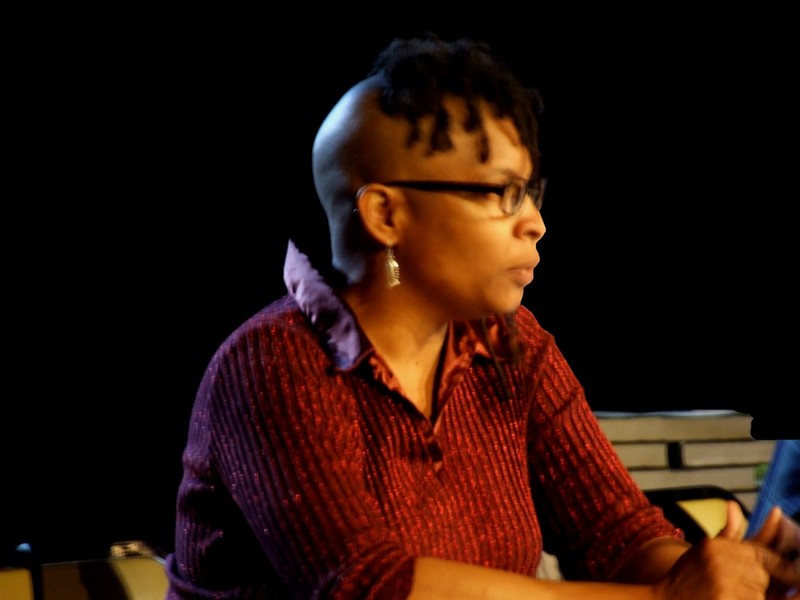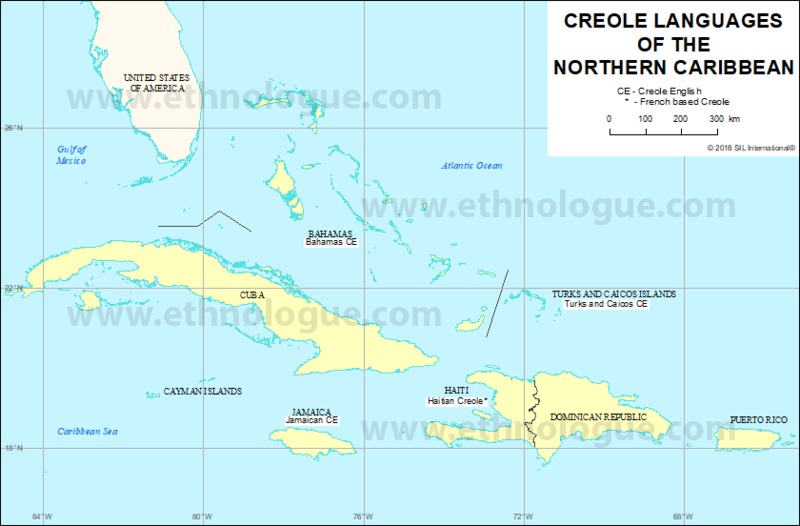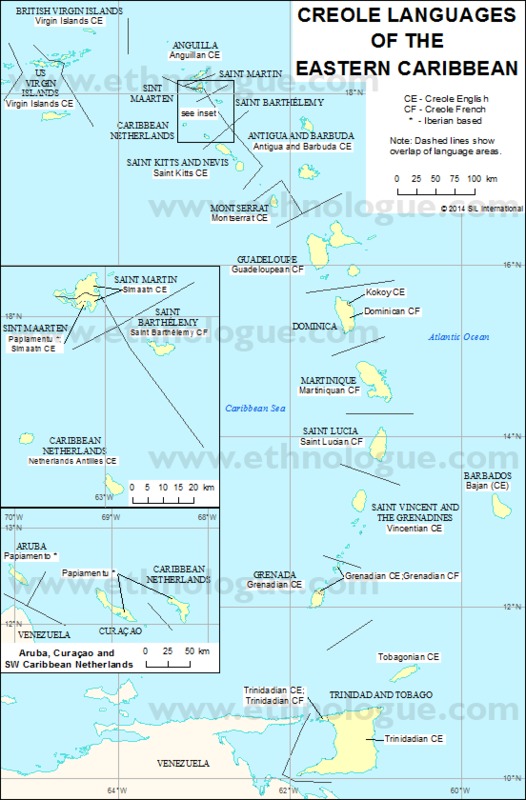Language - External Context
Nalo Hopkinson and Toronto: Then, Now, and Future
Nalo Hopkinson was born in Jamaica, and during her childhood spent time in Jamaica, Trinidad, Guyana, and the United States.3 From an early age, she was steeped in both African and European literature and folklore. When she was sixteen, her family moved to Toronto, where people of Caribbean descent were a marginalized minority.4 She now lives in the United States.3
Arriving in Toronto in 1977, Hopkinson's family was part of a large wave of Caribbean immigration to Canada that began in the 1960s and continues into the present day. Traditionally, Great Britain would have been the destination of choice for people living in the former British colonies of the Caribbean, but in the 1960s, Britain passed more restrictive immigration laws while Canada loosened restrictions. As a result, many Caribbean people (both those living in the Caribbean and those who had moved to Britain previously) began to immigrate to Canada to seek greater opportunities.5 There are now roughly 300,000 persons of Caribbean origin in Toronto. Their African descent and Creole language features have historically been stigmatized there, though in recent years Creole speech has gained an aura of "cool" due to its use by popular musicians such as Drake.6
Brown Girl in the Ring is set in a Toronto of the near future. Hopkinson constructs a world in which even the city government of Toronto has relocated to the suburbs, and roadblocks have been built between those cities and the urban center. "The only unguarded exit from the city core was now over water, by boat or prop plane from the Toronto Island mini-airport to the American side of Niagara Falls."1 In the wealthy suburbs, technology is more sophisticated than that of the present day, but mostpeople living in the core must make do without running water, electricity, or cars. As in our world, many residents of the city are of Caribbean descent. Other ethnic groups living there include Asian groups, Romani, and poor whites. The four most prominent characters in Brown Girl are Caribbean, and use Jamaican and/or Trinidadian Creole language features in their speech.
What Is a Creole?
A creole language begins as a pidgin: a language that develops when people who share no common language need to communicate with one another. It possesses simplified grammar, and its lexicon is mainly drawn from one dominant lexifier language.
As new generations are born in this setting, they begin to learn the pidgin as their native language, and the grammar becomes more complex, forming a creole. Creole languages exist along a continuum from the basilect, the most vernacular variety of the language, to the acrolect, which is the closest to the standard of the lexifier language. A range of intermediate mesolects lies between the two.9
The close relationship between the lexifier language and the creole may contribute to negative perceptions of the creole. The lack of a sharp distinction between the two can reinforce beliefs that the creole is merely a corrupted version of the lexifier language.16
History of Jamaican Creole (JC)
Arawak Native Americans were the first inhabitants of Jamaica. Spanish settlers arrived in 1509, enslaving the Arawaks into labor in farming, mining, and other enterprises. Disease brought by the Spanish devastated the Arawak population, however, and the Spanish began to enslave West Africans and import them to Jamaica. No clear evidence remains of any pidgins or creoles that may have developed during this early period, but some place names (e.g. Mammee Bay) and lexical items (e.g. cassava, iguana) suggest some degree of language mixing. One important subgroup that formed during this period was the Maroon culture, made up of escaped slaves who lived independently in the wilderness. The Maroons likely spoke some combination of Arawak, Spanish, and African languages at this time. 8
The English invaded Jamaica in 1655, finally defeating the Spanish in 1659. The English, too, enslaved Africans and brought them to the island. In addition to their native languages, many Africans also spoke Manding, which was used as a lingua franca for communication among different African groups, and/or Guinea Coast Creole English, which developed in English trading posts in the Gambia and the Gold Coast. Many of the original English settlers came from the lower classes and spoke nonstandard varieties of English. Jamaica's prominence in shipping and piracy added nautical vocabulary to the mix. Many Jamaicans of all classes and races lived first in Barbados before emigrating or being shipped to Jamaica.8
It is theorized that the English-lexified Jamaican Creole (JC) developed between 1660 and 1700 as enslaved Africans and free black persons interacted with dialect-speaking whites and also with the Spanish-speaking Maroons. As new English-speaking escapees joined the Maroon settlements, a shared African language may have been used to enable communication between the two groups.8
Toward the end of the 17th century, a series of natural disasters and crop failures devastated Jamaica's small farmers, and the economy became dominated by large plantations requiring vast numbers of laborers. More enslaved persons were imported from Africa, mixing each of their languages with the already-existing English-African creole spoken by both black and white Jamaicans. Movement in and out of the Maroon settlements was constant as well.8
The Atlantic slave trade ended in 1809-1810, and slavery itself was abolished in 1838. The flow of newcomers to Jamaica, both black and white, largely came to a halt at this time. "Therefore, as post-emancipation Jamaica became more creole in many ways (that is, deculturated in African terms), it also became more African as the freed slaves formed their own social groups, pursued their lives after their own fashion, and chose between aspects of the cultures they knew" (Lalla and D'Acosta 1990).8
History of Trinidad English Creole (TEC)
Much like Jamaica, Trinidad was originally inhabited by an indigenous population that was quickly destroyed by disease and slavery after the Spanish conquest in the 16th century.10 However, unlike in Jamaica, the Spanish did not immediately establish a plantation culture on Trinidad, preferring to use it as a base from which to launch expeditions into South America in search of precious metals.11
In the late 18th century, the Spanish invited citizens of other nations to settle Trinidad, so long as they were Roman Catholic. The offer was primarily accepted by French speakers: planters from the French Caribbean islands who had exhausted their soils and/or suffered losses in the French Revolution.10,11 They brought their enslaved people with them, and built an aristocratic French- and French-creole-speaking culture on the island.11
The British captured Trinidad in 1797, which led to an influx of immigrants from England and its Caribbean colonies; these newcomers spoke English or English-lexified creoles. While English became the language of Trinidad's government, French Creole remained extremely popular socially. With the abolition of slavery in the 1830s, followed by Britain's conquest of India in the 1840s, indentured workers were brought to Trinidad to labor on the plantations, bringing languages such as Bhojpuri, Tamil, and Urdu. Free and indentured Kikongo- and Yoruba-speaking workers from Africa were also brought to Trinidad during this time.10
In the mid-19th century, efforts were made to increase fluency in English10,11, and by the late 19th century, English had become fashionable among the upper class. English was used in official and educational settings, and Trinidad English Creole (TEC), incorporating English, French, Spanish, and a variety of African and East Indian languages, was the popular vernacular. However, some Trinidadians were monolingual in French Creole, and many bilingual in French Creole and TEC into the 20th century. One further influence on TEC was the English creole of the neighboring island Tobago, which has always been in close contact with Trinidad and was politically joined with it in 1889.10



